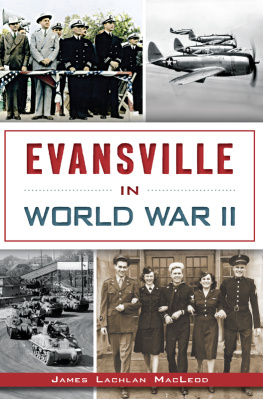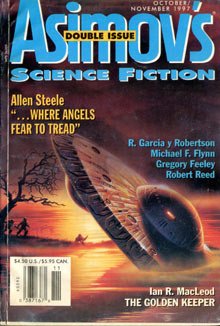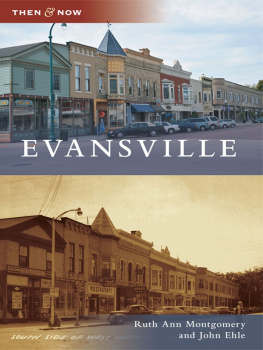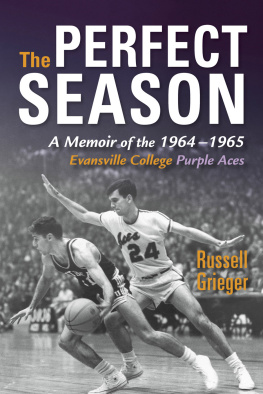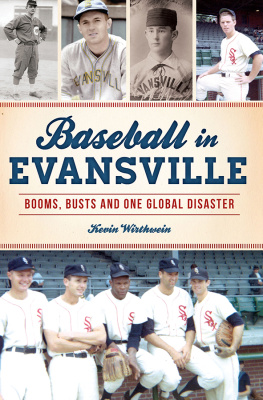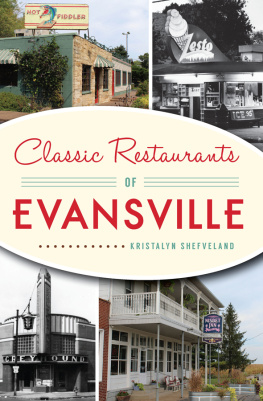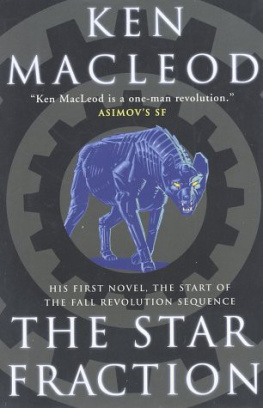


Published by The History Press
Charleston, SC
www.historypress.net
Copyright 2015 by James Lachlan MacLeod
All rights reserved
First published 2015
e-book edition 2015
ISBN 978.1.62585.206.9
Library of Congress Control Number: 2015948819
print edition ISBN 978.1.62619.675.9
Notice: The information in this book is true and complete to the best of our knowledge. It is offered without guarantee on the part of the author or The History Press. The author and The History Press disclaim all liability in connection with the use of this book.
All rights reserved. No part of this book may be reproduced or transmitted in any form whatsoever without prior written permission from the publisher except in the case of brief quotations embodied in critical articles and reviews.
For Jessica, Eilidh, Calum and Gavin.
CONTENTS
ACKNOWLEDGEMENTS
This book was only possible with the help of the people who have already invested countless hours in researching the history of Evansville during World War II and those local archivists who protect our precious historical legacy. I would like to acknowledge the work of Harold B. Morgan, Patrick W. Wathen, Darrel E. Bigham and James and Patricia Kellar, as well as Tom Lonnberg, Pat Sides and Jennifer Greene, all of whom have graciously helped at various stages of this project.
I also acknowledge the Evansville Vanderburgh Public Library; the Evansville Museum of Arts, History and Science; the University of Evansville; the Willard Library; and the University of Southern Indiana, whose physical and digitized collections of local newspapers, artifacts, photographs and cartoons from this period made this research practical.
I would also like to thank my colleagues in the History Department of the University of Evansville and Dr. Ray Lutgring, dean of Arts and Sciences, for their advice, support and encouragement. An Arts, Research and Teaching Grant from the University of Evansville supported some of my research, and Drew Robards was an excellent research assistant.
I want to take this opportunity to pay tribute to two men who took part in World War II: Donald Shaw, my wifes grandfather, who as a young man fought with the U.S. Army in France and Germany, winning both the Bronze Star and a Purple Heart; and my father, Lachlan MacLeod, who as a member of the British Merchant Navy repeatedly sailed the ferociously dangerous waters of the North Atlantic to transport the men and materials on which the Allies depended. To them, and millions like them, we owe our freedom.
Most of all, I want to thank my own children, who put up with a lot of conversations about World War II over the past eighteen months as this book took shape, and Jessica, who not only put up with it but read it and helped to improve it. To the four of you, with my deepest love, this book is dedicated.
James Lachlan MacLeod
Evansville, Indiana
July 2015
INTRODUCTION
On November 11, 1928, the city of Evansvilles first-ever municipal statue was dedicated in a dramatic location at Sunset Park on the Ohio River. The statue was The Spirit of the American Doughboy and was the citys memorial to the First World War. In his dedication address, the president of Evansville College, Earl Harper, said, You must do away with this madman, which is the institution called war,
These were stirring words, but within less than a decade, the opening exchanges of a second global conflict were beginning to play out half a world away in Asia. Within eleven years, the madmancalled war would be unleashed again, with almost unthinkable results. Within thirteen years, the United States would be at war once again, in a conflict that would ultimately cost some 405,000 American lives. And within thirteen years, the city of Evansville would once again be called on to send its sons to fight and die in faraway places and to make countless vital contributions to the war effort, most notably in manufacturing. In the process, the city would be transformed.
While traditionally the histories of wars have focused on strategy, tactics and battles, the reality of modern warfare in the middle of the twentieth century was that the single most important element was not any of these things but rather materials; the Pulitzer Prizewinning historian David M. Kennedy has spoken of the inexorable economic logic of modern warfare, when machines, and the speed and volume of their manufacture, mattered at least as much as men, and the swiftness and precision of their maneuver, in determining the battles outcome. If what Kennedy says is true, then Evansville certainly played a vital role in helping to ensure that this warthe war over the production of materialswas won by the Allies. And by winning this war, the Allies ensured their eventual victory in the wider war.
What Evansville did during World War II was stunning. Before December 1941, Evansville was a relatively sleepy Ohio River city, badly affected by the Great Depression and with only a couple companies working on military contracts. Bootz Manufacturing was producing a few practice bombs, and Holsclaw Brothers, Evansvilles original war plant, had been producing military tools and dies since the late 1930s. And yet, almost incredibly, the city was transformed within a few months into a uniquely productive center of manufacturing for the war effort. Tens of thousands of new workers flooded into Evansville, and two massive new manufacturing centers quickly emerged in the form of the Evansville Shipyard (announced February 14, 1942) and Republic Aviation (announced March 22, 1942).
The shipyard was to make navy vessels called landing ship tanks and by the end of the war had launched 167 of these unglamorous but absolutely essential transport ships. The LST was designed to sail right up onto a beach and then open its huge bow doors to disembark its cargo of tanks and other vehicles directly onto the beach. They were, according to British naval historian Nick Hewitt, probably the single most important type of ship used in assault landings anywhere in the Second World War[and were a] massively important piece of technology.
And Republic Aviation was to manufacture 6,670 of one of the wars most important aircraft, the P-47 Thunderbolt. No other city in the United States produced both LSTs and P-47s, and had Evansville done nothing else, that alone would have made its contribution to the war effort unique.

Overview of the shipyard with ships on the building ways (right), the launching ways (center) and the outfitting piers (left), May 1942. Evansville Museum/Evansville Vanderburgh Public Library (EVPL).
But there was, of course, much more to Evansvilles unique contribution than transport ships and fighter airplanes. As Darrel Bigham has observed, As significant as the Evansville Shipyard and Republic were, most war workers were employed in factories that had existed before early 1942. Vanderburgh county firms would, by March 1944, receive nearly $600 million in defense contracts[and] forty-eight Evansville businesses did some sort of war work.
It was indeed an army. Thousands of Americans flooded into Evansville from all over the country, and the citys manufacturing workforce more than tripled from eighteen thousand to sixty thousand, with many of these jobs being well paid. It was a stark contrast with the Depression years, when Evansville had seen 25 percent unemployment.
Next page
